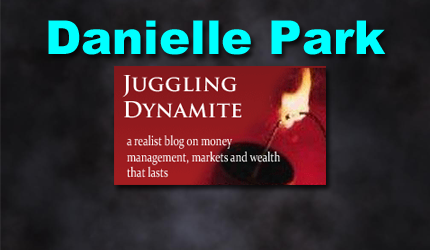September 24, 2025 | Good News and Bad News

Institutional exposure to equities is at its highest level since November 2007, and American households’ allocation to stocks has surpassed the 2000 tech-bubble highs. Trading volume on U.S. stock exchanges last week reclaimed last April’s record high.
At the same time, as debt prices have soared, the yield reward that investors are receiving from owning corporate bonds is at its lowest since 1998.
The good news is that the majority of risk assets have rebounded from April’s crash and ripped higher year-to-date.
The bad news is that the more they continue, the more brutal the subsequent sell-off is likely to be — that’s the math.
Of course, not everyone is helplessly long risk securities. A few have preserved and increased their fortunes over time by patiently waiting for more durable and rational opportunities to act on. See, Black Swan Manager Sees Huge Rally, Then 1929-Style Crash:
“I’m the crash guy—I remain the crash guy,” says Mark Spitznagel, who earned $1 billion in a single day for his clients during 2015’s “Flash Crash.” A protégé of “Black Swan” author Nassim Nicholas Taleb, his hedge fund, Universa Investments, also scored major gains when Lehman collapsed and when Covid-19 sparked a meltdown.
The alarming part of Spitznagel’s current outlook is that he sees conditions akin to 1929, the year of the Wall Street crash. The silver lining for those hoping the bull-market music will keep playing a while longer: He thinks this is more like the early part of 1929 when stocks added significantly to their Roaring ’20s gains.
In fact, since 1980, the S&P 500 has returned an above-trend 26% annualized in the 12 months preceding the start of each bear market (shown below).
Booming markets tend to attract capital with increasingly wild abandon. The bad news is that subsequent bear markets take back years of capital gains and more. “The markets are perverse,” says Spitznagel. “They exist to screw people.”
STAY INFORMED! Receive our Weekly Recap of thought provoking articles, podcasts, and radio delivered to your inbox for FREE! Sign up here for the HoweStreet.com Weekly Recap.
Danielle Park September 24th, 2025
Posted In: Juggling Dynamite













The so called crash guy’s fund started in 2007. Could only up to last years total return of the fund which is 115 percent from 2007 to 2024. Always holding out buying out of the money puts has really eaten into the profits of when the market crashes.Constant worry about a market crash has lost opportunity of simply buying & holding as the dollar loses purchasing power.